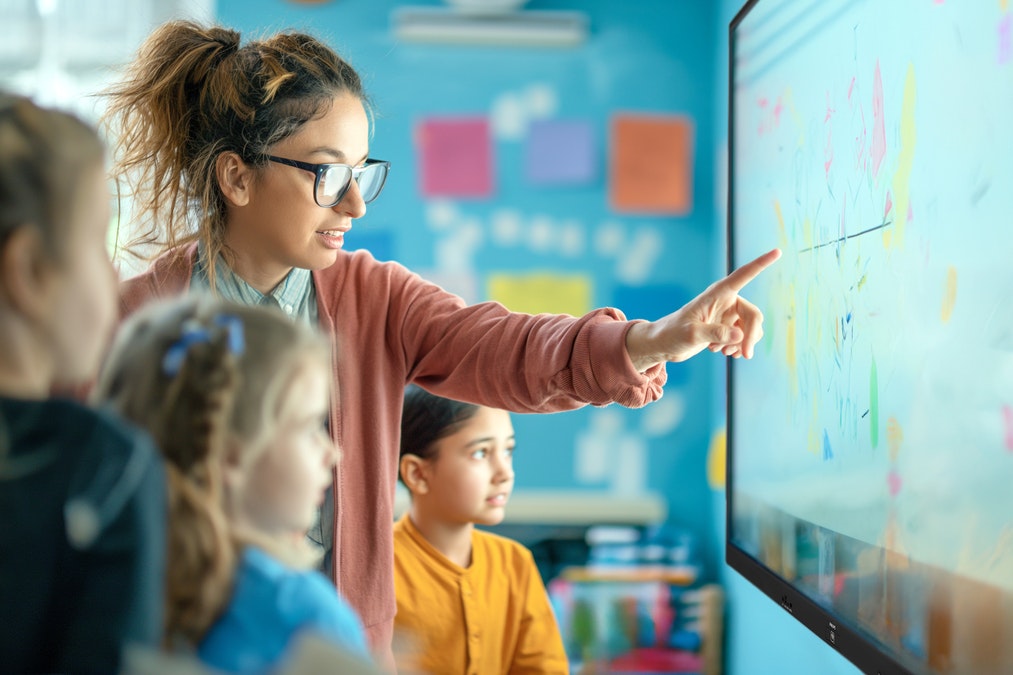Harmonising AV/IT for efficiency in education
The IT manager in any education setting is a busy individual. In fact, spending time talking with IT managers in education, there is never a dull moment.
That is for a number of reasons. For those in countries in which interactive display technology is now entering the space, selecting a solution, and designing the architecture on which it will sit is time consuming. And, for those in countries where technology has long played a role in the classrooms and across campus, the complexity of solutions, and the different types of products now being integrated, have grown.
For all, AV has joined the IT manager’s remit, and creating a unified approach – one that enables efficiencies in time, and budget, can be a minefield.
The need for a harmonised AV/IT approach
The benefits and opportunities surrounding coordinated AV and IT solutions, whether with interactive classroom displays, computers, digital signage around campus, and other hardware, together with software solutions, are clear and incontestable. In-depth planning and research, though, both for the short- and long-term, can prove costly and, in education, as many IT managers will confirm, the journey to digitisation has been a long one.
That journey started with TVs, then computers, followed by interactive whiteboards, and finally to collaboration displays and digital signage – with many different types of peripherals – all around campus. And without the budgets to start from scratch, all of these technologies may live in the same ecosystem, unharmonised and disconnected.
The global education technology market size was valued at USD 142.37 billion in 2023 and is expected to grow at a compound annual growth rate of 13.6% from 2023 to 2030, according to Grand View Research.
Not all of those investments into tech are good ones, though. A percentage of those resources will be for correcting mistakes, either through incomplete advice or the need for speedy decision-making. While it can be tempting to be drawn in (usually by price) by less established brands, post-installation can uncover all kinds of compatibility, service and support, and usability issues. All costing the IT manager more time.
So, what is the answer?
Connected education – solutions without barriers
While some brands place restrictions on which platforms can and can’t be used on their displays, PPDS prefers to enable customers to ‘display without limits’. Designed on a professional Android platform, Philips Professional Displays enable total solutions, enabling easy integration with preferred software and apps, as well as across hardware brands.
This in turn supports the delivery of AV/IT ecosystems, adding greater value, simplifying installations and, crucially, removing the pain points associated with AV/ IT convergence.
This has seen PPDS stretch beyond the display; developing and introducing a broad and evolving range of hardware and software solutions, including those developed in-house, such as Philips Genius teaching and learning software, and through strategic partnerships with leading and sought-after third-party providers.
Fleet control – wherever, whenever
Imagine managing an entire display fleet, with visibility of when one display might need some proactive maintenance, and the ability to turn off displays when not in use. This has long been possible in IT, but in AV it is an emerging opportunity. PPDS Wave is the remote device management ecosystem unlocking the full power, versatility, and intelligence inside Philips Professional Displays.
Answering many of the pain points left by others in this field, PPDS Wave is a secure, legacy-free cloud platform that connects AV/IT managers to their network of Philips Professional Displays, be they in a single location, installed throughout an entire campus, or even across a consortium of academies and establishments. Firmware and software updates, debugging screens, adjusting settings, adding content, receiving alerts, and anticipating issues are just some of the evolving features.
Wave supports education settings with their sustainability ambitions, too, helping to reduce total cost of ownership by managing energy efficiency and extending product lifetimes, with advanced power scheduling (ie. powering down outside core hours), and adjusting brightness based on lighting conditions.
No education setting is the same, and with Philips Professional Displays there is no such thing as a one-size-fits-all approach, instead bringing the solutions education IT managers need to build and tailor their AV/IT ecosystems to fit the needs of teachers, students, and operational staff, for today and into the future. Convergence has never been less challenging.


